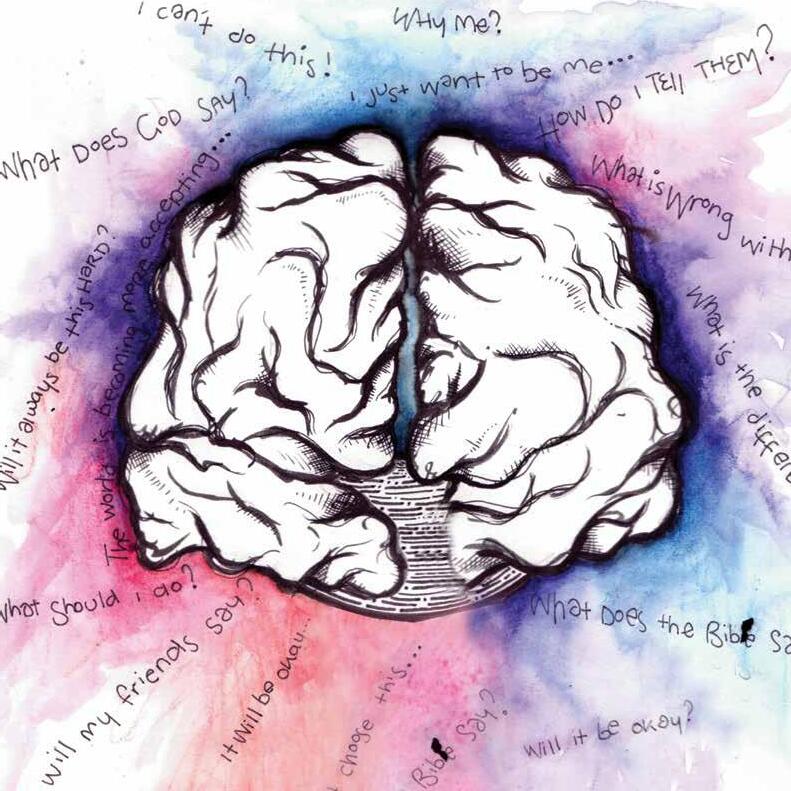
Let´s Talk about Sexuality The Explosive Power of Taboo Subjects world student christian federation europe region ecumenical journal | issue 36 | 2017
“This issue of Mozaik follows the Study Session “Let´s talk about sexuality: The Explosive Power of Taboo Subjects” organised by WSCF – Europe and EYCE. The publication is funded with the support received from the Erasmus+ Programme of the European Commission, European Youth Foundation and the European Youth Centre of the Council of Europe. This publication reflects the views only of the author, and the donors cannot be held responsible for any use which may be made of the information contained therein.”
editor-in-chief
James Jackson
art editor
Andrea Franić – Studio Idearium
illustrators

Esther Baird & Clare McCay
address
wscf Europe



Piazza di Centa 9, 38122, Trento, Italy

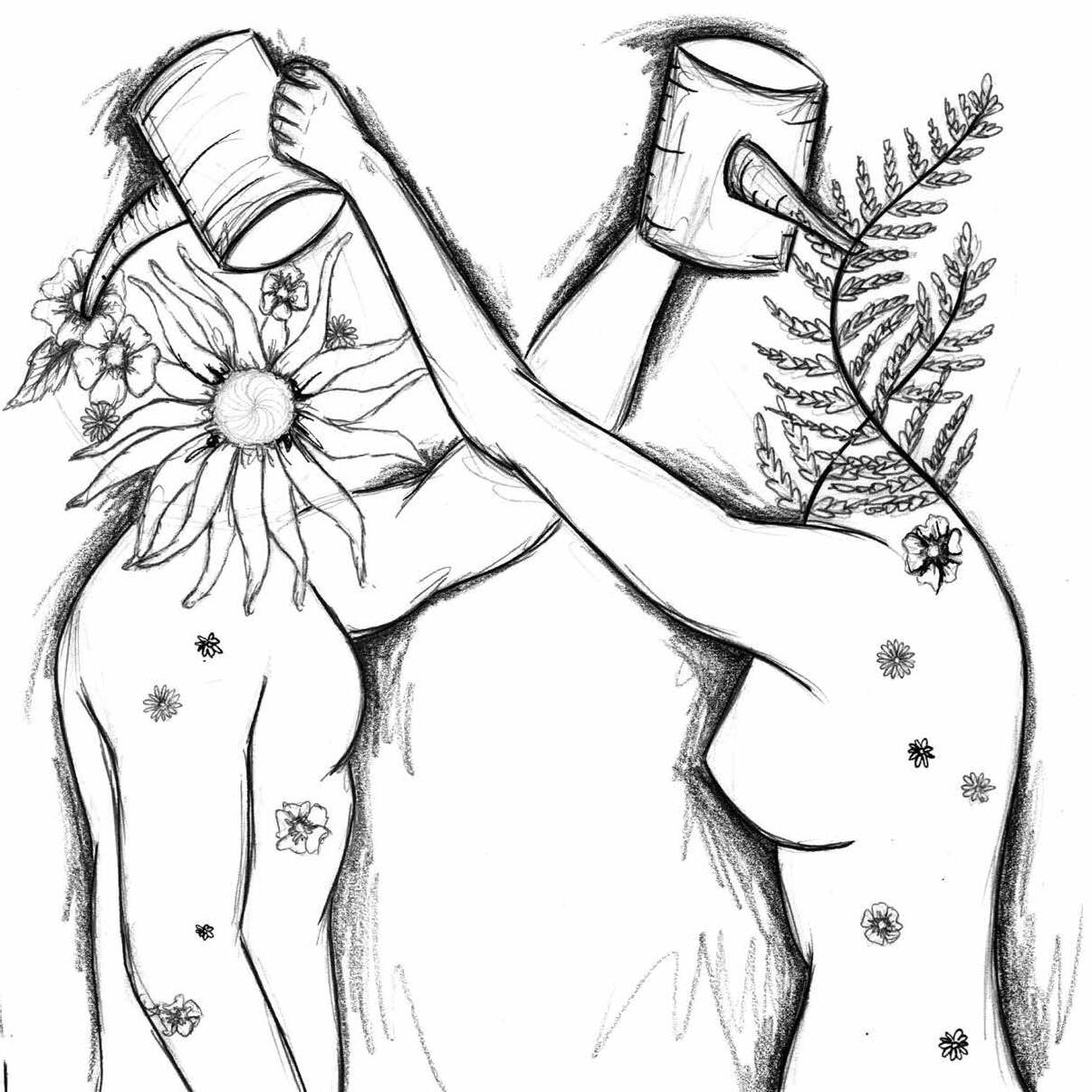
Mozaik Editorial
Everybody has one, but nobody talks about it. Without it, no one would exist. People disagree whether it’s a choice or you’re born with it. And it can be dangerous enough to warrant prohibition in many of the worlds’ countries. What is the answer to this mysterious riddle? Well, as you can probably guess from the cover, it’s sexuality. It is something which affects every person in the world, and yet it is rarely discussed openly, except with condemnation or embarrassment.
In this issue of Mozaik, we decided to follow wscf Europe’s lead and break the taboo. We will be discussing many issues relating to sexuality. However, sexuality is not just something we experience; it is also something we study, and think about in relation to faith. For this reason, this 36th issue of Mozaik is divided into two sections: Heart and Mind.
Heart is based on sharing our experiences of sexuality and faith; whether this relates to growing up as the trans child of a minister and rediscovering your own faith, like in our spotlight article In or Out from trainee minister Alex Scott Young, or the shifting boundaries of modern relationships from Chaplaincy Assistant Ella Sibley in “This is my Partner…” Knut Svihus shares his story of coming out…. as a Christian! Meanwhile Rob Howe and Pierre Thierry reflect on masculinity and gay sexuality, and Carla Grosch-Miller shares a lesson from a conference from the Centre for the Study of Christianity and Sexuality.
In Mind we learn about scripture’s take on this topic, so crucial to our very existence. Does the Bible set out to prohibit sexuality? This shibboleth issue is discussed by expert on lgbt issues Dr K. Renato Lings, who shares amazing insights on same-sex love in the Bible. Hadje Sadje asks whether women are empowered or denigrated by stories about them in the Old Testament. Are they Texts of Terror or Liberation? Reflecting on the Budapest conference, Hoi Tung Ng discusses whether transgender issues should be viewed as medical probles. And, reprinting an article from Mozaik 26, we investigate one of the most taboo topics of all time: Understanding the Mystery of Clerical Sexual Abuse.
I hope this issue raises, and answers, some questions in your mind, so that we can fully understand one of the mysteries of our shared humanity: sex.
Blessings,
James Jackson
James Jackson is a teacher, dj and editor based in Liverpool, uk. He has a Masters Degree in Religion & Political Life, and enjoys travelling, food and music.
 Mozaik Editor-in-Chief
— james jackson
Mozaik Editor-in-Chief
— james jackson
Mozaik 36
section 1 | heart
In or Out | Alex Scott Clare - Young | 6
Student Sexuality | Ella Sibley | 13
Forever Walking Out the Closet | Knut Natskår Svihus | 18
A Lesson from a Real Life Pastoral Encounter | Carla Grosch-Miller | 21
Masculinity | Rob Howe | 27
Is Love Dirty? | Pierre Thierry | 31
section 2 | mind
Homosexuality and the Bible | Dr K. Renato Lings | 35
Texts of Oppression or Liberation? | Hadje Cresencio Sadje | 41
Understanding the Mystery of Clerical Sexual Abuse | Martin Weber, D.Min. | 51
Demedicalizing Transgenderism | Hoi Tung Ng | 55
La Sexualite & Hermaphrodite | Melissa | 59
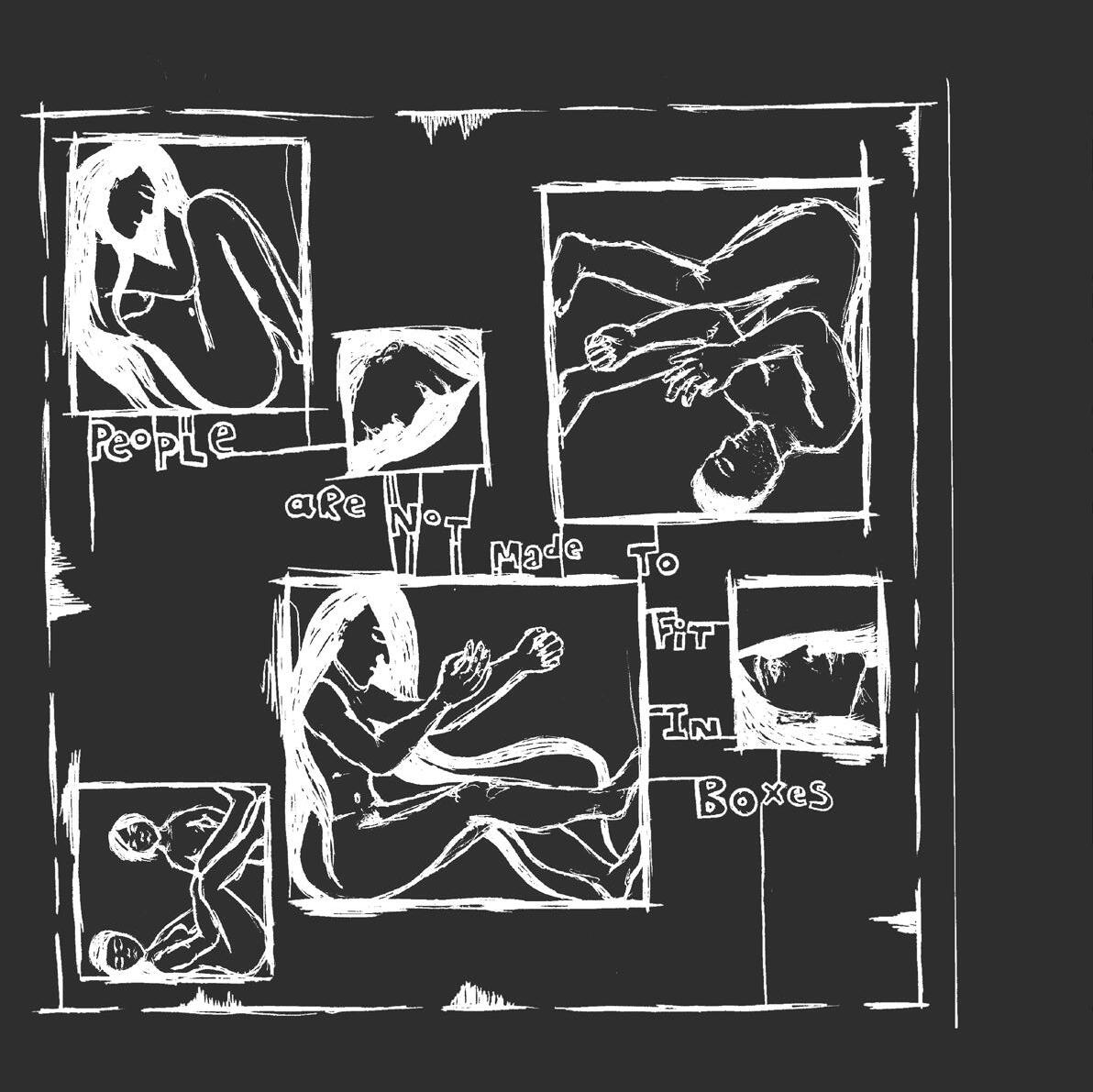

section 2 Mind Homosexuality and the Bible | Dr K. Renato Lings | 35 Texts of Oppression or Liberation? | Hadje Cresencio Sadje | 41 Understanding the Mystery of Clerical Sexual Abuse | Martin Weber, D.Min. | 51 Demedicalizing Transgender? | Hoi Tung Ng | 55 La Sexualite & Hermaphrodite | Melissa | 59
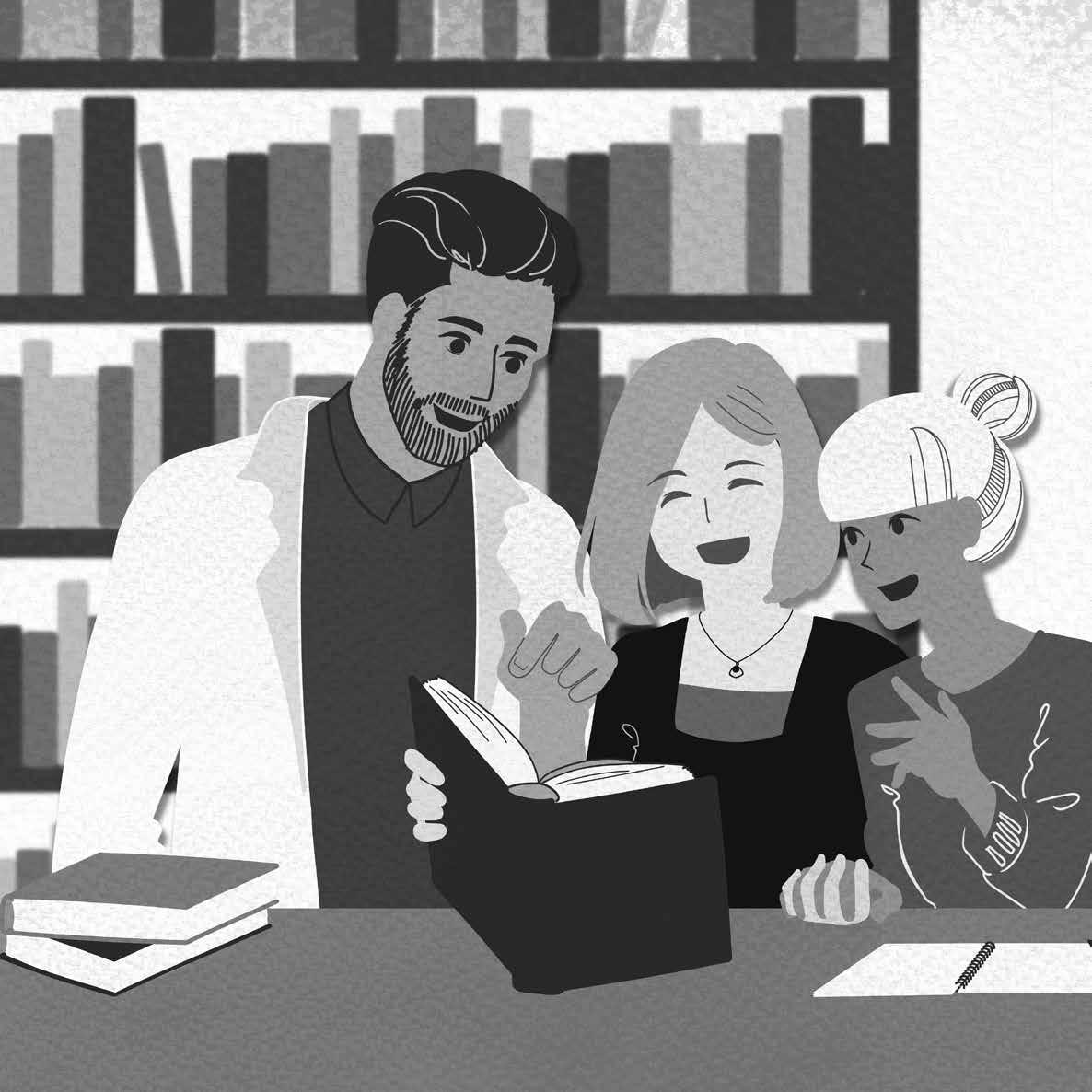
Exploring Some Amazing Biblical Texts
introduction
For centuries, Christian tradition has condemned intimate same - sex relationships, calling them “sinful”. Theologians have based their negative attitudes on a few Bible verses taken out of context, which has led them to exclude or persecute lesbian, gay, and bisexual persons (lgb). In this article I briefly discuss two types of biblical passages: (1) the condemnatory texts and (2) stories of same - sex love. Both groups are important but also very different. For a number of reasons, they should be approached separately. Each text is unique, and some contain amazing stories.

mozaik 36 I Mind Section I 35
homosexuality and the bible:
— dr k. renato lings
1. condemnatory texts
a) the old testament
In the Old Testament, a famous passage is the story of Sodom and Gomorrah in Genesis 18 – 19. For more than 2000 years, theologians have discussed it. The original version was written in Hebrew centuries before the Babylonian exile (sixth century b.c.e.). The Old Testament prophets, who lived before, during and after the exile, interpreted the story. Isaiah 1:10 addresses the “rulers of Sodom” and “people of Gomorrah”, saying in 1:17, “Cease to do evil, learn to do good. Seek justice, rescue the oppressed, defend the orphan, plead for the widow”. Isaiah clearly associates the names
of Sodom and Gomorrah with gross social injustice. For his part, the prophet Ezekiel accuses his native Jerusalem of being “more corrupt than Sodom” and of “committing more sins than Sodom ever did” (16:47 – 48). According to the Hebrew prophets, the transgressions of Sodom were idolatry and mistreatment of the poor. The book of Exodus (22:21 – 24; 23:9) explains that the poor included resident aliens. In Genesis 19:9, the mistreated resident alien is Abraham’s nephew Lot. The men of Sodom physically attack his home, forcing him and his family to flee.
When Alexander the Great conquered large territories in the ancient world (third century b.c.e.), the so - called Hellenistic period began. Greek became the dominant lan-
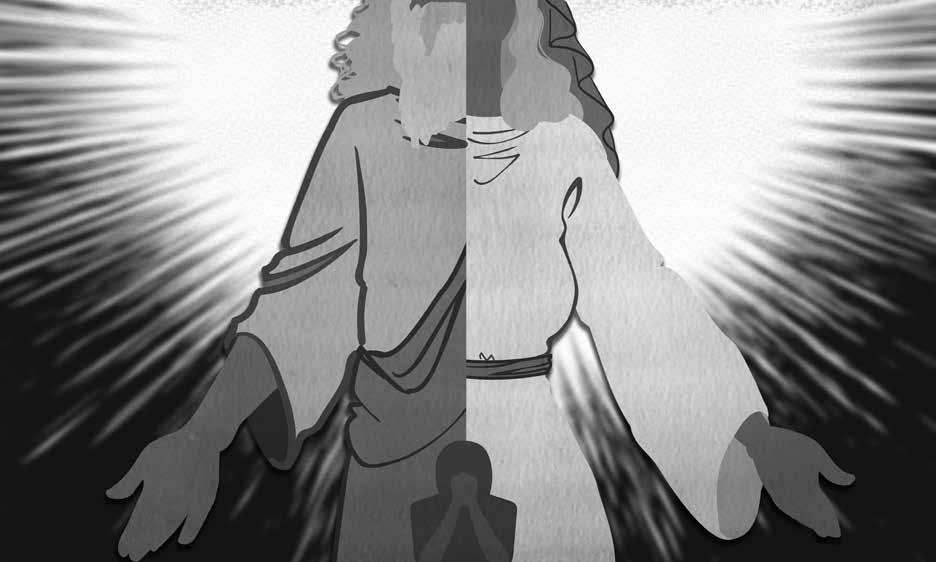
mozaik 36 I Sexuality and Taboos I 36
guage, and the official Bible of early Christianity was a Greek version of the Old Testament called the Septuagint. Very soon different interpretations of the story of Sodom and Gomorrah arose. Some commentators regarded these cities as places of “inhospitality”, and others spoke of “illicit sex”. According to Jewish philosopher Philo of Alexandria (first century c.e.), the sin of Sodom was “pederasty”, i.e. adult men having sex with adolescent boys. The Christian church fathers accepted Philo’s approach. During the Middle Ages, Christianity officially viewed the sin of Sodom and Gomorrah as sex between males. In the eleventh century, the Italian monk Peter Damian coined the word “sodomy”. From the thirteenth century, this term also included intimacy between two women. Throughout the Western world, and in the colonies overseas, sodomy became a crime.
In 1869, the word “homosexuality” was coined. Gradually it replaced sodomy. However, only in the late twentieth century have many countries decriminalized same - sex intimacy while other countries refuse to do so. For most scholars today, the story of Sodom says nothing about loving same - sex relationships. Some argue that what happens in Genesis 19:5, where the men of Sodom want to “know” the two visitors, is equal to “attempted gang rape”. Others, however, suggest that the Sodomites are violating the sacred laws of hospitality. A third group proposes to read the story in accordance with the Hebrew prophets, who vigorously protested against social injustice committed against the poor and vulnerable, including resident aliens.
The other famous condemnatory text in the Old Testament is Leviticus 18:22 (amplified in 20:13 to include the death penalty). Many Bible versions present this very short verse as “With a man you shall not lie as with a woman”. However, this is a poor translation. The original does not have the words “man” and “as with”. The Hebrew text literally says, “With a male you shall not lie down the lyings - down of a woman”. Note that the Hebrew word ishshah, “woman”,
sometimes means “wife”. In current academic literature, at least sixteen different interpretations of this obscure verse exist. They range all the way from “homosexuality” and “male homosexuality” to “anal penetration” and “gender confusion”. In recent years, several scholars have suggested that Lev 18:22 may be addressing the issue of “incest between males” or perhaps “incest with your father’s wife”. A lot more research is needed to clarify the meaning of this verse within its context.
b) the new testament
In the New Testament, a few hotly debated texts are found in the letters of the apostle Paul. One such passage is 1 Corinthians 6:9 – 10. Here the apostle lists a number of vices, including the obscure Greek term arsenokoitai. A literal translation would be “male - liers”, “male - beds”, or “bed - males”. Some Bible versions offer the mistranslation “homosexuals”. This is patently wrong because “homosexual” and “heterosexual” are modern words unmatched in ancient languages. In addition, “homosexuals” includes women, and arsenokoitai refers to a group of male persons. In today’s Western societies, the law establishes equality between consenting adults. In antiquity, all relationships took place within a strict social hierarchy. In short, no one knows exactly who the arsenokoitai were. Among biblical scholars, there is considerable debate. Therefore, Bible translators should handle this text with care and avoid jumping to conclusions.
In Paul’s day, the city of Rome had more than 400 temples dedicated to various deities. The Christian community there included two groups of converts. Some had a Jewish background and others were “gentiles”, i.e. people raised within pagan religions. A particular passage in Romans 1 is central to the homosexuality/Bible debate (see below). From verse 18, the apostle paints an unflattering picture of idolatrous people who lived in the past, long before Paul was born. In 1:26 the text speaks of “their” women, i.e. females who
mozaik 36 I Mind Section I 37
belonged to the idolatrous men. These women committed acts “against nature”. According to early Christian interpreters, this meant that they were letting the men penetrate them anally. In antiquity and the Middle Ages, having sex “against nature” meant “not using the woman’s vagina”. The men in 1:27 clearly participated in sexual orgies with other males, possibly associated with the temples of Bacchus (god of wine) or the goddess Cybele. These people are described as “evil, boastful, and heartless” (1:28–32). Clearly the main issue in this chapter is idolatry. At no point does Paul refer to relationships among Christians. He wrote this letter to resolve conflicts within the newly founded Christian community in Rome (cf. chapters 2, 8, 11, and 14 – 16).
b. same - sex love
The Bible contains several stories of same - sex relationships. They may or may not have had a sexual component. Although they have always been part of the biblical canon, for a long time theologians have been loath to engage with these texts in any meaningful way. In recent decades, a growing number of scholars have pointed out that the biblical narrators present such relationships as legitimate and respectable. Two stories are included in the Old Testament and two are in the New Testament.
The book of Ruth describes two widows who, against all odds, stick together for life. Naomi, an Israelite from Bethlehem, spends years living in the neighbouring country of Moab. Following the death of her husband and two sons, she returns to her native Bethlehem. Ruth, her Moabite daughter - in - law, decides to go with her, leaving everything behind. The narrator explains that Ruth clung to Naomi, using the same verb davaq from Genesis 2:24, where “a man shall leave his father and mother and cling to his wife”. In other words, Ruth commits herself for life. This also becomes clear from her statement in Ruth 1:16: “Where you go, I will go. Where you live, I will live. Your people shall be
my people, and your God shall be my God”. Naomi accepts this extraordinary offer and the two women travel to Bethlehem. The community receives the couple very well. The local women celebrate Ruth’s relationship with Naomi, speaking to the latter about “your daughter - in - law, who loves you”, and “she is more to you than seven sons” (4:15). Ruth becomes the great - grandmother of King David (4:22).
The books of Samuel contain the story of two young men named David and Jonathan. The latter is the grown - up son of King Saul, while David is a young shepherd boy. Soon after they meet (1 Sam 18), Jonathan falls in love with David and forms a lifelong bond with him. Initially Saul loves David, but his feelings change later. As David becomes immensely successful, Saul becomes jealous and bitter. He regards David as a dangerous rival and tries to kill him on several occasions. Jonathan, however, remains faithful to David. Whenever he and David meet to renew their commitment to each other, they invoke the name of yhwh, God of Israel (20:42). Following Jonathan’s death on the battlefield, David composes an elegy, saying (2 Sam 1:26), “My brother Jonathan, very pleasant were you to me. Your love to me was wonderful, surpassing the love of women”.
A particular story in the New Testament occurs in two versions. One is in the gospel of Matthew (Mt 8) and the other in Luke (Lk 7). A military officer, possibly a Roman centurion, approaches Jesus requesting healing for his dear slave boy. The situation is unusual for several reasons. In ancient Palestine there was an abundance of slaves, which made them expendable. Many masters treated their slaves with contempt and brutality. Furthermore, it was extraordinary for a Roman in a position of power to approach a poor, nomadic Jewish preacher (Jesus) for help. Therefore, the centurion must have had a special motivation for humbling himself before Jesus. Apparently no local physician had been able to heal the young man. The fact that he went out of his way to save the life of this slave shows that the officer was very
mozaik 36 I Sexuality and Taboos I 38
fond of him. As it alternates between the Greek words for “slave” and “boy”, the original text discreetly indicates that the two men may have had an intimate sexual relationship where “boy” refers to the younger part. This was socially acceptable in the Greco - Roman world. Significantly, Jesus granted the officer’s request and highly commended him for his faith.
Who is the beloved disciple? In most circles, the answer tends to be “John, of course”. For centuries, church tradition has taught this. However, the gospel text itself suggests another name. In John 11:3, the two sisters Martha and Mary send a message to Jesus asking him to come to their home at once because “the one you love is ill”. This is a reference
to their brother Lazarus, who dies shortly afterwards. When Jesus finally arrives and weeps outside Lazarus’ tomb (11:35), those present exclaim, “See how he loved him”. Following his miraculous resurrection, in 12:2 Lazarus is at the dinner table with Jesus and his disciples. In 13:23 the text mentions “the one whom Jesus loved” reclining at the table next to Jesus. At this point, the name of Lazarus disappears from view, but instead an unnamed beloved disciple is present on a number of crucial occasions, including the final chapters 19, 20, and 21. Although the gospel writer does not clarify this point, it would seem that Lazarus and the beloved disciplecould well be the same person. At any rate, the original Greek text highlights the tenderness, intimacy and strong bond between Jesus and this disciple (13:23; 19:27).
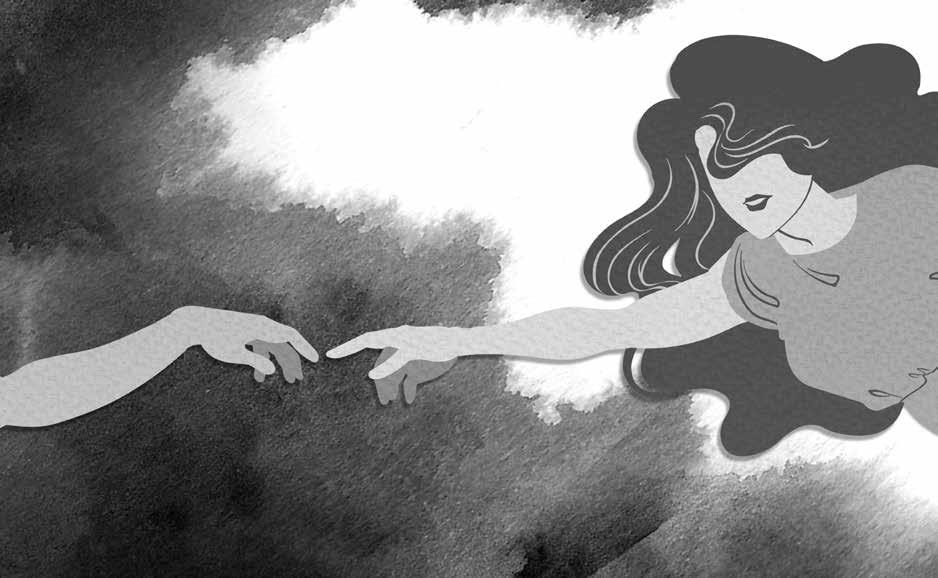
mozaik 36 I Mind Section I 39
conclusion
In summary, the common assumption that the Bible opposes the modern concept of homosexuality is unfounded. Until very recently, Christian theologians have provided poor interpretations of the texts, ignoring the social context of the writers and the implications of the original words used, bending them to fit their own prejudices. The brutal use of these texts has caused immense suffering to lgb persons. In a number of countries around the world, lesbian, gay and bisexual believers still face discrimination, harassment and persecution allegedly in the name of the Bible. The time has come for the churches to let go of their obsession with sexual issues. The condemnatory passages are irrelevant to the lives of lgb people. Other stories describing same - sex love are far more significant. They should be in focus whenever the issue of same - sex relationships in the Bible is debated. Last, but not least, the Christian gospel is for all believers (John 3:16): “For God so loved the world that he gave his only Son, so that everyone who believes in him may not perish but may have eternal life”.
K. Renato Lings holds advanced degrees in Spanish, Translation, and Theology. He has studied Latin, Greek and Hebrew and published books in Spanish (2011) and English (2013) on sexuality and biblical interpretation.

mozaik 36 I Sexuality and Taboos I 40
— k. renato lings
Texts of Oppression or Liberation? How interpreting the Bible can help or harm Women.
— hadje sadje
introduction
Modern scholars have questioned the role of women in the production of biblical interpretation, saying they have been neglected and silenced. Critics argue that most biblical interpreters have given greater emphasis to masculine images and metaphors of God. Women as a group have been subordinated within the traditional Christian community; we have often a tendency to associate women exclusively with tragic stories of terror in Scripture. We cited these biblical stories of terror as against women. However, scholars argue that utilising feminine imagery of God and retelling texts of terror from the Christian Scripture challenges the
creeping normality of oppressive social structures that abuse and oppress women in our society.
These assumptions have brought me two following proposals. Firstly, we should utilize and raise awareness around the feminine images of God in the Bible. Secondly, we should value the transformative power of storytelling using biblical stories of terror as a ‘consciousness-raising’ tools for abused women; this can lead and empower contemporary women to speak out, stand up, and bravely face their own oppressors.
mozaik 36 I Mind Section I 41
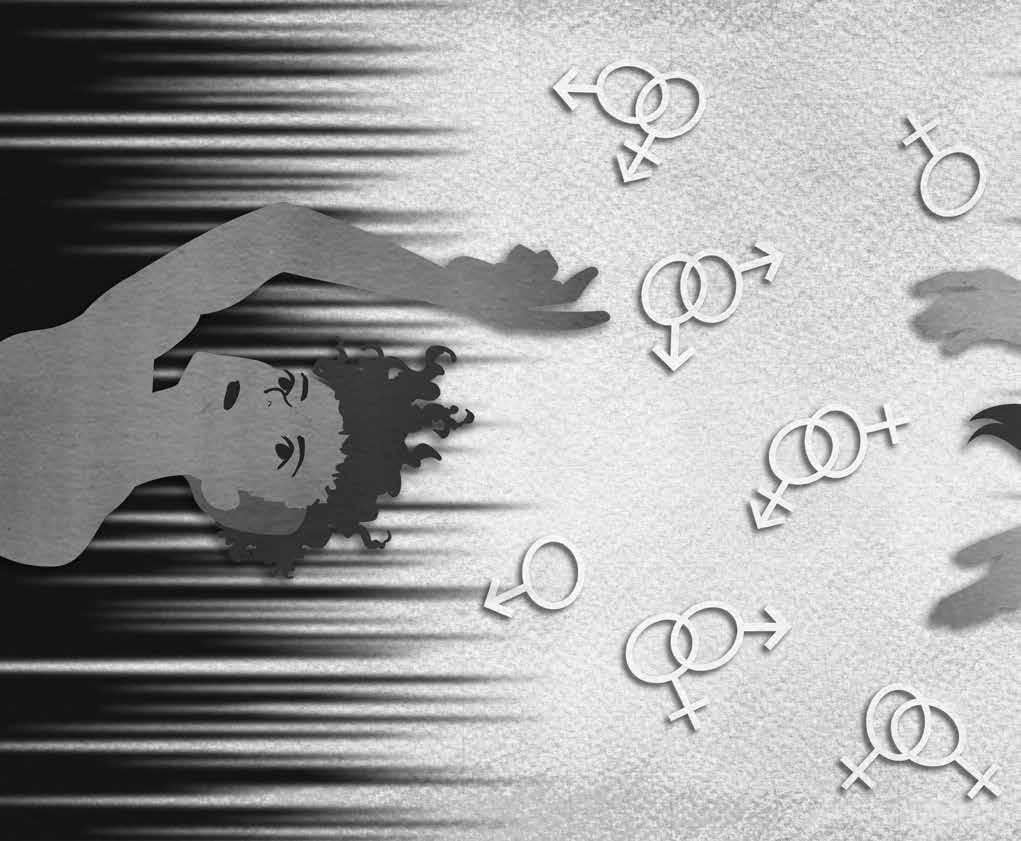
mozaik 36 I Sexuality and Taboos I 42
a. the transformative power of biblical feminine images of god
The most visible and obvious form of violence is physical, also known as direct violence. However, experts suggests that it can take in the subtle or invisible forms such as structural and cultural violence. According to the founder of Peace and Conflict studies Johan Galtung, structural violence refers to a social class, gender or nationality that have more access to goods, resources, and opportunities compared with other social class, gender and nationalities; cultural violence pertains to dominant beliefs and attitudes. Although social scientists put emphasis on structural violence as the root of all evils, cultural violence has played a major role in cementing, recreating and reproducing social inequality. It appears that religious metaphors and symbols fall into the category of cultural violence. Religious metaphors and symbols about women are embedded in unquestioned worldviews, norms, habits, and symbols that cement social hierarchy between sexes. There are progressive Christians who attempt to offer resistance and alternative perspectives. Since religion and gender inequality are contentious issues, these topics result in a variety of reactions and responses among Christian communities.
As already pointed out, widespread and systematic injustices against women are supported by the patriarchal interpretation of Sacred Scripture. Using religious metaphors, symbols, and analogies that possess patriarchal biases evokes distorted interpretations of the Gospel message. The Christian church’s main justification of the concept of patriarchal bias are based on the following biblical verses: Genesis 2: 22, I Corinthians 14: 34-35, I Timothy 2: 12, Colossian 3: 18, and Ephesians 5: 22-24. These verses has been used historically to subject women. In this distorted interpretation, patriarchal culture sets the agenda for the church. This patriarchal interpretation has become an ide-
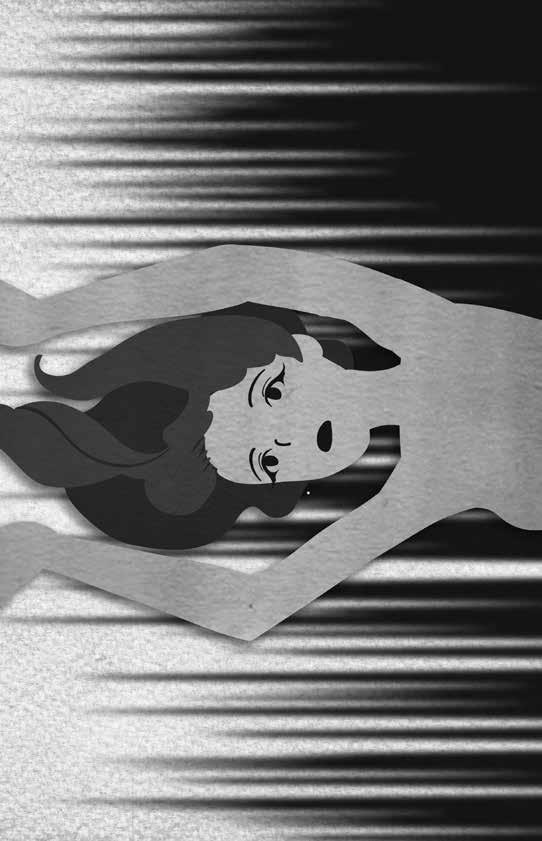
mozaik 36 I Mind Section I 43
ological bulwark of domestic violence against women. The problem lies at the root of conceiving women’s suffering as part of God’s divine plan. This universal instruction has spawned major criticisms from critical feminist scholars. For example, Catholic nun Christine Gudorf describes in her book entitled, Comparative Religious Ethics:
As such, Christianity became a patriarchal religion and the Scripture became the source of such teaching to subordinate the position of women. Despite criticisms, the Church still uses these religious images, metaphors, and analogies as tools to subordinate position of women in the church leadership. For example, biblical metaphors such as father, king, lord, judge, warrior and shepherd possess some patriarchal biases that evoke masculine images for God. However, these biblical metaphors do not imply the superiority of men over women in the sight of God. As misogynistic ideas strive until today, we should assert that Christian Scripture is a legitimate source of inspiration, transformation, and, potentially, liberation for both men and women.
Today, Christian feminists contend that we need to give emphasis and appreciation of feminine images of God. The Hebrew Bible (Old Testament) gives us numerous references to God as a woman. For example, a woman in labor, a gentle nursing mother, a female eagle, and so forth (Isaiah
mozaik 36 I Sexuality and Taboos I 44
“In patriarchal religions, women have not played leadership roles. They have had little if any voice in creating, selecting or interpreting the canon of sacred texts and little role in creating the theology or doctrine of officiating in rituals of religions.”
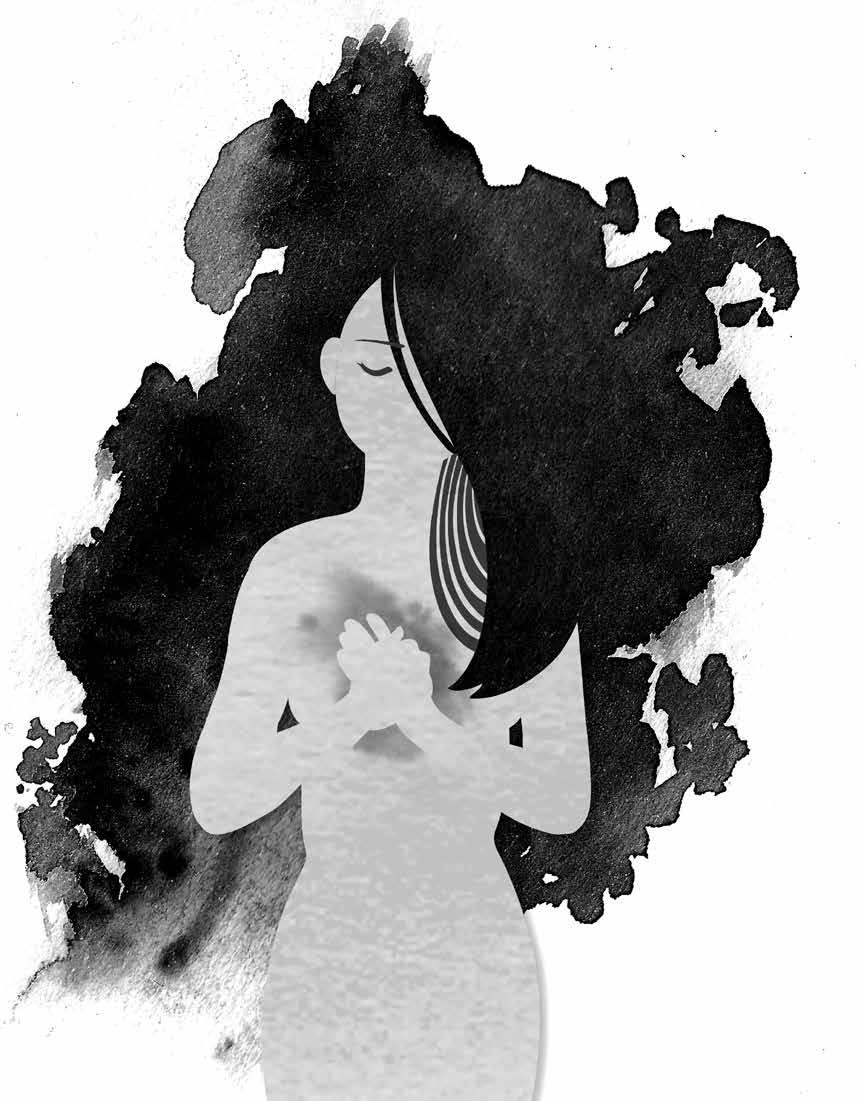
mozaik 36 I Mind Section I 45
42:14; 49:15; Deuteronomy 32:11-12). These biblical images were also used by the New Testament writers. For example, the writer of Matthew utilized the imagery of mother hen longing for her chicks (see Matthew 11:19; 23: 27; Luke 13:34). This verse reimagines God’s image in the new context of society. However, both the imagery of the mother and the father is both used to address God in the Ancient Near East. According to Sarah J. Dille, “In the ancient Near East, gods and goddesses were said to be like both father and mother to the worshiper”.
Furthermore, the writer of Matthew re-appropriating and reinforcing the old concept of God as a mother hen that provides a protection of the Israelites (Ps 17.8; 36.7). This imagery of mother hen challenges the patriarchal hegemonic discourse. It subverts the notion that women are weak and powerless. Utilizing and retrieving the imagery of mother God become a counterdiscursive view of womankind. Needless to say, we should use these feminine images to challenge the notion that God favors men. The crucial thing to see these metaphors as challenging the dominant metaphors in an ancient patriarchal society. For patriarchal society, these would be ‘violation metaphors’ or offensive metaphors, but these metaphors could lead to women’s liberation in male-dominated society. The biblical feminine images of God advocate an alternative perspective of reality, which allow us to see new things and take new courses of action.
Trible has taken some essential steps toward addressing these biblical texts of terror. The four problematic stories are: the story of Hagar the slave, Gen. 16: 1-16, 21: 9-21; the rape of Tamar, 2 Sam. 13: 1-22; an unnamed concubine, Judg. 19:1-30; and the daughter of Jephthah offered as a human sacrifice, Judg. 11: 29-40. Trible argues that ‘texts of terror’ describes women as troublesome, weak, abused, exploited, raped, a commodity, and inferior to men.
For example, the story of Hagar the slave. Trible wrestled with this tragic story. In Genesis 21: 9-21, Abraham forced his wife-slave (euphemistically called “concubine” in most English translations) Hagar and their son Ishmael into the Desert of Beersheba without being concerned for their safety and security. The story has been largely undefined and subject to various conflicting interpretations. However, this story is a domestic violence against women. Obviously, Hagar suffers from physical, psychological, emotional, and sexual violence. Feminist scholars argue that retelling these four stories will put these abuses into a space for open debates and rethinking of our religious practices. Retelling texts of terror will inspire and support abused women to speak out about their own experiences and seek help to fight against any form of oppression. To avoid discussing and confronting these four texts of terror would create a range of obstacles to women liberation.
b. the transformative power of storytelling using biblical stories of terror
Phyllis Trible is a leading expert on feminist interpretation of biblical stories of terror. The Hebrew Scripture, as Trible claims, has four problematic texts, which Trible calls “texts of terror.” In her book, Texts of Terror, she proposes to examine those four biblical stories poetically and theologically.
Moreover, the story of Hagar is a story of abused woman that names the unnamed evil of our oppressive society today. It is a story that would provide a ‘consciousness-raising’ (conscientisation) tools for abused women to empower them. As a culture of silence creates countless discrete acts of violence against women, and legitimized patriarchal society in itself creates an oppressive culture. Trible contends that we should identify their suffering as our suffering today by retelling and rereading these stories. As abused women are silent because of a culture of shame, rereading these four stories would allow them to talk about their abuse experi-
mozaik 36 I Sexuality and Taboos I 46
ences. Why? Such biblical narratives recount the constant struggle of women in the contemporary society. In short, the story of Hagar named the unnamed evil of our times. The writer tries to identify the unnamed evil that oppressed and marginalized women in the Ancient patriarchal society. For Trible, Hagar’s suffering is a recounting of marginalized and oppressed people in patriarchal society. It is a powerful story that empowers the powerless and giving voices to
voiceless. To sum up the above: engaging with these ‘texts of terror’ from different angles hopefully unfolds the qualities of a woman that liberates her from the male-dominated society. To identify oneselves in the texts of terror as a victim of oppression, like Hagar, is an absolutely essential step in the ‘consciousness-raising’ (conscientisation) of any of abused women. Trible’s unconventional approach will help us to see the multiplicity of meanings and views in the
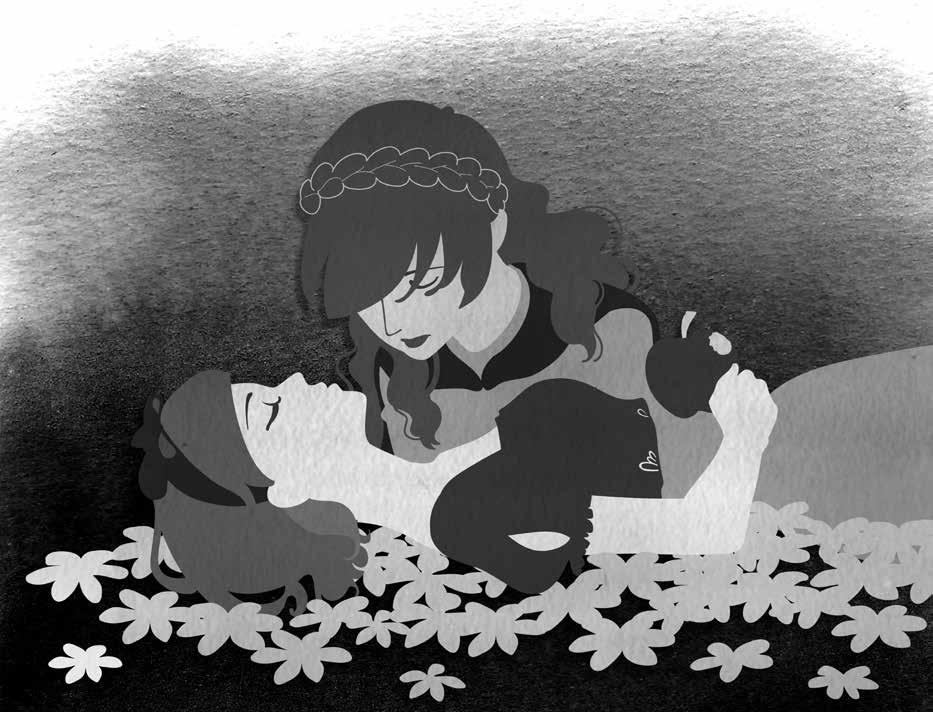
mozaik 36 I Mind Section I 47
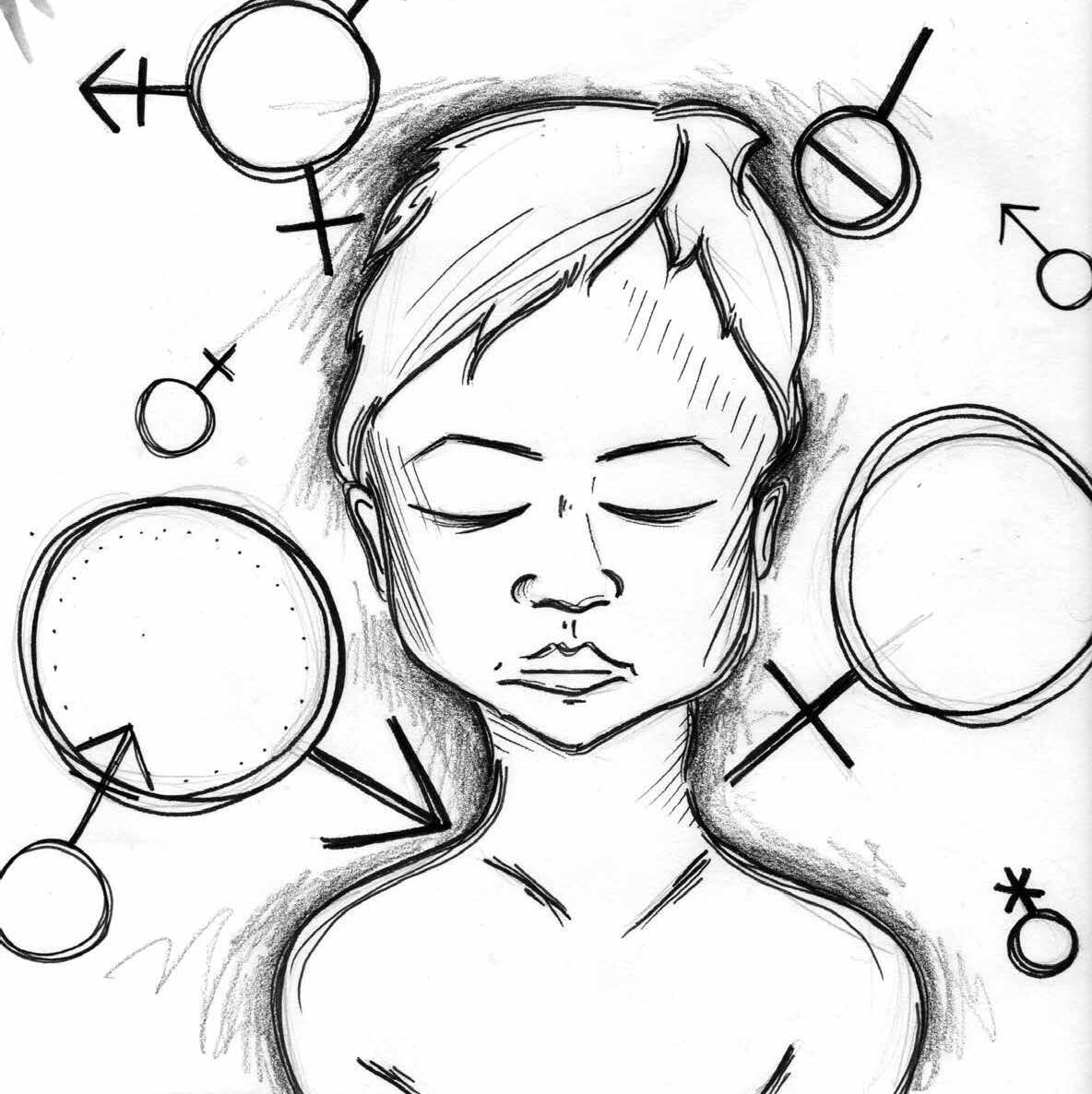
story of Hagar, and its unique understanding of the biblical stories that empower women. The incorporation of storytelling techniques into bible study method will served as mechanism for ‘consciousness-raising’ (conscientisation) or educating and empowering and for creating a broad-based social concern with women’s issues. A particularly important recent study highlights the urgency of encourage abused women to speak out against physical and sexual violence. According to un Women 2016 Report:
How do abused women cope with psychological, psychical, emotional, and sexual violence? The answer is and epidemic of silence. An epidemic of silence is a culture in which the majority of people are submissive to the patriarchal social order that maintains women’s silence as a natural and given reality. It is interesting to observe that in the patriarchal society, the abused women are considered ‘mute’ and prohibited to think critically and consciously analyse their own situation and society as well. Contemporary studies show that abused women choose to keep silent due to a culture of shame. Most abused women believed that being abused is normal. Some are afraid of danger and threatened by a perpetrator. Others feel disgraced within their own community and speaking out would bring shame to their family. As a result, abused women prefer to keep silent. We all know that it may be very hard for victims to talk about their abuse
mozaik 36 I Mind Section I 49
It is estimated that 35 per cent of women worldwide have experienced either physical and/or sexual intimate partner violence or sexual violence by a non-partner at some point in their lives.
experience, however, victims should challenge and confront these psychical, emotional, and sexual abuses. In recent studies, incorporation of storytelling techniques have been used successfully in different disciplines such as psychology, literary studies, religious studies, and biblical studies.
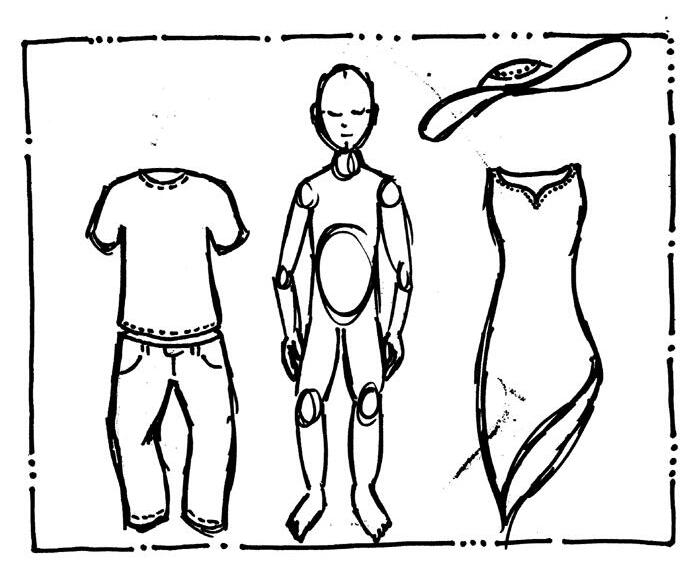
As abused women retell and identify their own experiences of helplessness and victimization onto the texts of terror, this can create a ‘consciousness-raising’. Incorporating the storytelling techniques into the biblical study method as a ‘consciousness-raising’ tool for abused women would empower them to speak out, stand up, and face bravely against their abuser. In order to ensure this, Trible suggests that in retelling stories of terror to abused women, the silent treat-
ment is not an option. Because of this, using these stories of terror would provide an open space to discuss their abusive experiences in the public sphere. By doing this, it is naming the unnamed evil against the culture of silence and shame.
— hadje cresencio sadje
Hadje Cresencio Sadje is an associate member in Center for Palestine Studies-soas University of London. He is pursuing his Master of Arts in Theology and Religious Studies at the ku Leuven and Evangelische Theologische Faculteit – Belgium.
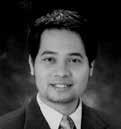
mozaik 36 I Sexuality and Taboos I 50
Understanding the Mystery of Clergy Sexual Abuse
reprinted from Mozaik 26.
— martin weber, d.min.
(from the october 2008 edition of hopespeak)
At the Stop Being Silent! seminar in Minsk, in an interactive session on ‘Redefining Domestic Violence: Sexual Exploitation and the Church’, Dr. Valli Batchelor lectured about violence against women by clerical abusers. This excerpt provides an overview of clergy sexual exploitation and the Hope of Survivors network, following from the previous article on what happened when one woman tried to speak out in Australia. This excerpt has been reprinted and adapted with permission from the Hope of Survivors website (www.thehopeofsurvivors.com), a resource and support organisation for victims of clergy sexual exploitation. Because the majority of clergy sexual abuse is male clerical abuse of female parishioners, this article only addresses this majority.
mozaik 36 I Mind Section I 51
the hope of survivors
Shame is the reason I’m so proud to be connected with The Hope of Survivors. Perhaps I should explain. More than any organisation I’ve known in several decades of pastoral ministry, including law enforcement chaplaincy, the Hope of Survivors (thos) helps victims feeling ashamed from sexual abuse find dignity, confidence, hope, and even joy. And so I’m proud to serve on the executive board of thos.
Shame afflicts most of us to some degree. It’s part of the human condition. As a chubby child, I was ashamed of my weight. Parents might be ashamed of their teenagers’ bad choices. Reformed ‘party animals’ may feel shame for years of carousing. But the human spirit knows no shame to match that of a sexual abuse victim who has been manipulated into feeling guilty for her predator’s sins. And those among them most deeply sunken in shame may be victims of clergy sexual abuse.
Reasonable people are outraged at a sexual predator who drags a jogger off the trail into the bushes. Society springs to the defence of such victims. As for incest, everyone except enabling relatives is furious about paternal predators. But when it comes to clergy sexual abuse, congregational sympathy usually gravitates to a popular, powerful preacher. Ironically, victims of clergy sexual abuse often must go outside the church to find a sympathetic heart. Tragically, they may lose not only their trusted spiritual leader but also most, if not all, of their faith community – even close friends.
This is where thos has been such a lifesaver for hundreds of lonely victims of clergy sexual abuse who suffer in solitary shame. thos helps them realise that:
• As with all professionals, a pastor is responsible for not abusing his trust by allowing – and often planning – the sexualisation of what began as normal interaction between himself and a vulnerable parishioner.
• Sexual abuse is not necessarily scary or painful; often unsuspecting victims are drawn into a close friendship with a pastor that unexpectedly becomes romanticised and then sexualised.
• Clergy romance or sex with a parishioner is not an ‘affair’, because it arises from a power imbalance. Physicians, educators, and workplace supervisors understand this. Somehow it seems harder for many churches to accept this, perhaps because of the hero status of a star pastor.
• Most pastors are men of integrity who never would abuse a member. To preserve this propriety, clergy need education and sometimes counselling to manage their own emotions and attractions as they interact with the vulnerable members of their flock.
• Victims of clergy sexual abuse need and deserve advocates in the church to guide them through a resolution process that emphasises healing rather than vindictiveness.
mozaik 36 I Sexuality and Taboos I 52
• Those who survive clergy sexual abuse need not bear the burden of proving to anyone – not even themselves or God – that they are perfect and completely innocent about what happened to them. The Bible says all of us are sinners in need of the grace and forgiveness of God.
• It is possible to forgive one’s abuser while also establishing boundaries of protection against further abuse by anyone inside or outside the body of Christ.
• Women who have suffered clergy sexual abuse need to find their primary identity in being God’s beloved children; this is more than having merely survived something evil done to them.
clergy sexual abuse
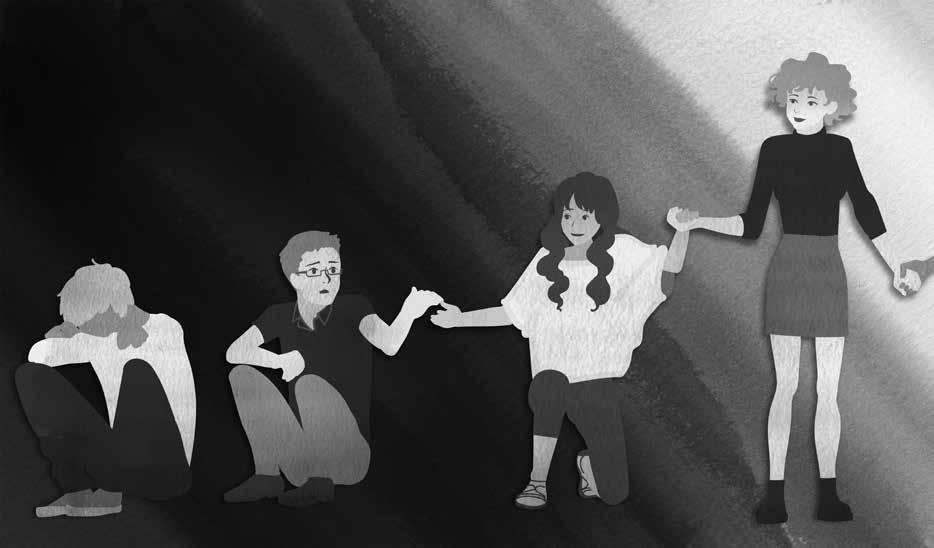
To summarise the tragedy of clergy sexual abuse:
• It is normal for Christian men and women faithful to their spouses to feel attracted to other people. Unmet emotional needs tend to multiply this chemistry.
• When a pastor finds himself attracted to a parishioner, it is his or her responsibility as a professional caregiver to recognise the danger and use the responsibility of leadership to prevent the relationship from becoming romanticised.
mozaik 36 I Mind Section I 53
• Some predatory pastors are so corrupt as to be strategically and compulsively abusive, but many fine pastors become sexually abusive simply because they allow their love for God and their spouses to become less important than their ministry to church members.
• Church leaders and other members typically rally around a popular pastor, despite credible evidence that he is guilty of sexual abuse. Often the church would rather blame his victim than lose a beloved spiritual leader.
• Paradoxically, victims of abuse often take much or most of the blame and shame upon themselves after being drawn into inappropriate sexuality.
• The more likeable and admirable a pastor is, the more a victim of his sexual abuse may suffer shame and guilt. This also is true at the opposite extreme; the more deceptive and manipulative a career predator is, the more likely his victim may suffer increased shame and guilt – the most clever abusers manage to download all blame to the victim.
• In the aftermath of clergy sexual abuse, most efforts to aid recovery are devoted toward the abuser and his spouse rather than to the victim, who often is abandoned or even expelled from the community of believers.
In such cases, the Hope of Survivors often becomes the only hope of surviving clergy sexual abuse.
suggested reading:
As recommended by Valli Batchelor and Amanda Gearing
D Garland and C Argueta, ‘How Clergy Sexual Misconduct Happens: A qualitative study of first-hand accounts’, Social Work and Christianity, 2010.
macsas: Minister and Clergy Sexual Abuse Survivors, <www.macsas.org.uk>.
National Organization for Women, ‘Call to Criminalize Sexual Exploitation of Women by Clergy’, <www.now.org>.
National Organization for Women, ‘now President Calls for Fundamental Reform to Stop Clergy Sexual Abuse’, <http://www.now.org/issues/violence/clergyabuse_statement.html>.
M Porter, Sex, Power and the Clergy South, Yarra, Australia, Hardie Grant Books, 2003.
‘Silent Majority: Adults Abused by Clergy’, <www.adultsabusedbyclergy.org>.
mozaik 36 I Sexuality and Taboos I 54
Demedicalising Transgenderism?
— ng, hoi tung
In May, I attended the study session “Let’s talk about Sexuality” in Budapest, jointly organised by eyce and wscf-e. During one of the guest talks, a gender activist from Budapest mentioned that transgender people have to undergo a series of mental health assessment in order to have gender reassignment surgery, and the procedure can be very humiliating. He thought that this should be abolished. The humiliating assessment is probably a common obstacle faced by most of transgender people all over the world. My question to that activist was: Are the surgeries in Budapest funded by the government?
“Only 10% of the surgery fee”, he said. No wonder he suggested it'd be better if transgender people can get rid of the medical assessment procedure. However, in some regions, take Hong Kong as an example, gender reassignment surgery can be mostly funded by the government if it is proved to be “medically necessitated”. To obtain this proof, one has
mozaik 36 I Mind Section I 55
to be diagnosed with “Gender Identity Disorder” (gid) by a mental health specialist. In other words, people who need financial support from the government or their insurance company have to be diagnosed with gid. This medical term suggests that transgender is a disorder, a sickness, something wrong or abnormal. In short, it pathologises and stigmatises transgenderism.
Not only the name of the diagnosis – Gender Identity Disorder – is pathologising being transgendered, but also the fact that the diagnosis assumes that people who feel uncomfortable to follow the norm of their assigned gender are suffering from certain disorder or disease. This diagnosis does not question whether there is a problem with the gender norms.
In light of the above, the dilemma is: on the one hand, diagnosis serves as an instrument (“medically necessitated”) for transgendered people to receive funding from the government or insurance companies. On the other hand, it leads to the problem of treating transgenderism as a disease, and it stigmatizes. Personally, I tend to agree that keeping such diagnosis is necessary under the current social context because it helps to obtain funding for gender reassignment surgeries, which in turn enables transgendered people to achieve greater autonomy. They feel it is unbearable to live their life with the gender they were assigned at birth. Also, when medical treatment such as hormone prescription or gender reassignment surgery is involved, it is quite impossible to totally exclude this matter from of the medical realm.
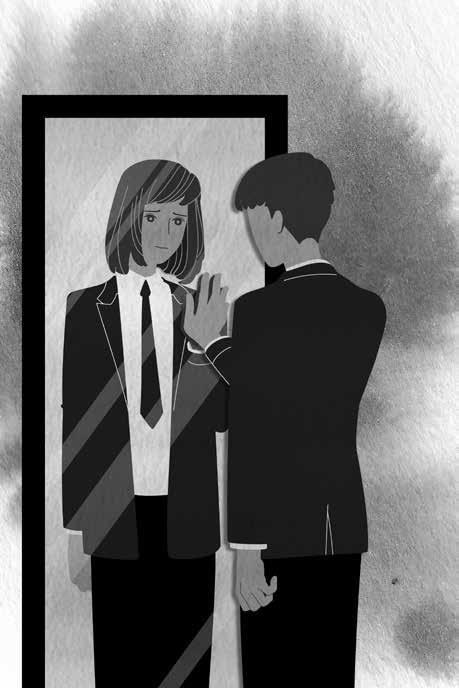
Some compare gender reassignment procedures with plastic surgeries, and proclaim that these shouldn't be funded by public funds if that's not “medically necessitated”, just as plastic surgeries are not funded in that case either. Let's not to argue whether such comparison is appropriate first; such a viewpoint suggests that society’s stakeholders worry that if medical proof is not needed at all, resources will be abused for fulfilling people's “own interest” instead of something vitally important.
Based on the presumption that government resources are limited and should therefore be used effectively, the current mental health assessment for transgender works as a filter, to distinguish which people have the greatest need for the resources. Even though I doubt the practice of giving psychiatrists the power of diagnosis, I still tend to believe that certain assessment should be carried out in order to monitor whether resources are being used wisely.
Therefore, one thing needed to be figured out: if psychiatrists shouldn’t be the ones to give a diagnosis or assessment, then who should?
mozaik 36 I Sexuality and Taboos I 56
Jacob Hale pointed out that “this matter should not be mediated by psychologists and psychiatrists; the question of whether and how to gain access to medical and technological resources should be a matter between client and medical doctor exclusively.”(pp83) Commenting on this viewpoint, in “Undoing Gender”, Judith Butler assesses that this suggestion “treats the patient as a client who is exercising consumer autonomy within the medical domain”, but it is also important “to ask whether the inclinations of medical practitioners are generally to be trusted with this responsibility”.
Though there's no sociologically grounded answer to this question, Hale's view suggests that it is not the problem of “medicalisation”, but the problem of exercising power over people's autonomy in the name of mental health, and the negative effect of pathologising transgenderism.
Therefore, when it comes to assessment, it is important to prevent it from instilling a diagnosis of mental disorder onto the clients. Not conforming to the gender norm should not be deemed as a disorder, nor should we conceive of being transgendered as a mental illness. As sex and gender are to a very large extent socially constructed, any gender related discomfort should not merely be regarded as an individual's internal problem, especially when the rigid gender norms is probably the source of discomfort. Failing to “feel appropriate” with one's assigned gender is just something not typical, but not “abnormal”.
When such “gender atypical traits” (pp82), a term suggested by Dr. Richard Isay, occur and greatly obstructs one’s ability to have a normal social life, one should be given the right to access a funded surgery.
a period of time in order to undertake gender reassignment surgery. Even though I uphold the idea that “gender is fluid”, an assessment that acknowledges someone’s gender by deciding whether it meets the test of time is undeniably politically incorrect, but based on the social context that there's limited public resources such criteria seems to be a necessary evil.
concluding thoughts
Throughout the writing process of this article, I have been doubting whether it is ethical for me to comment when people should be given the rights to obtain helps to undertake transgender/transsexual treatments. The condition of transgenderism and the urge for treatment is something that I have never experienced, and I can hardly imagine that very feeling. Knowing the treatment can be a matter of life and death to some people, but also the sad fact that individuals conditions can only be represented by authorities, and only through such social means can we exercise personal rights, I hope what I suggested is a lesser evil and practical way to achieve the balance between these two sides. I would like to quote one sentence written by Judith Butler to conclude this situation, “until those social conditions are radically changed, freedom will require unfreedom, and autonomy is implicated in subjection.”
Butler, Judith and Butler Judith. Undoing Gender. Boca Raton, [Fla.]: Routledge, Taylor & Francis Group, 2004.
Last but not least, most diagnoses of someone as transgender require that the patients show that they can live a desirable life with the gender they want to “become” over
Hoi Tung Ng is a member of scmhk, and a committee member of the Queer Thoughts and Actions (aka Nutong Xueshe), a Hong Kong gender human rights organisation. She previously worked in the hiv/aids field.

mozaik 36 I Mind Section I 57
— hoi tung ng
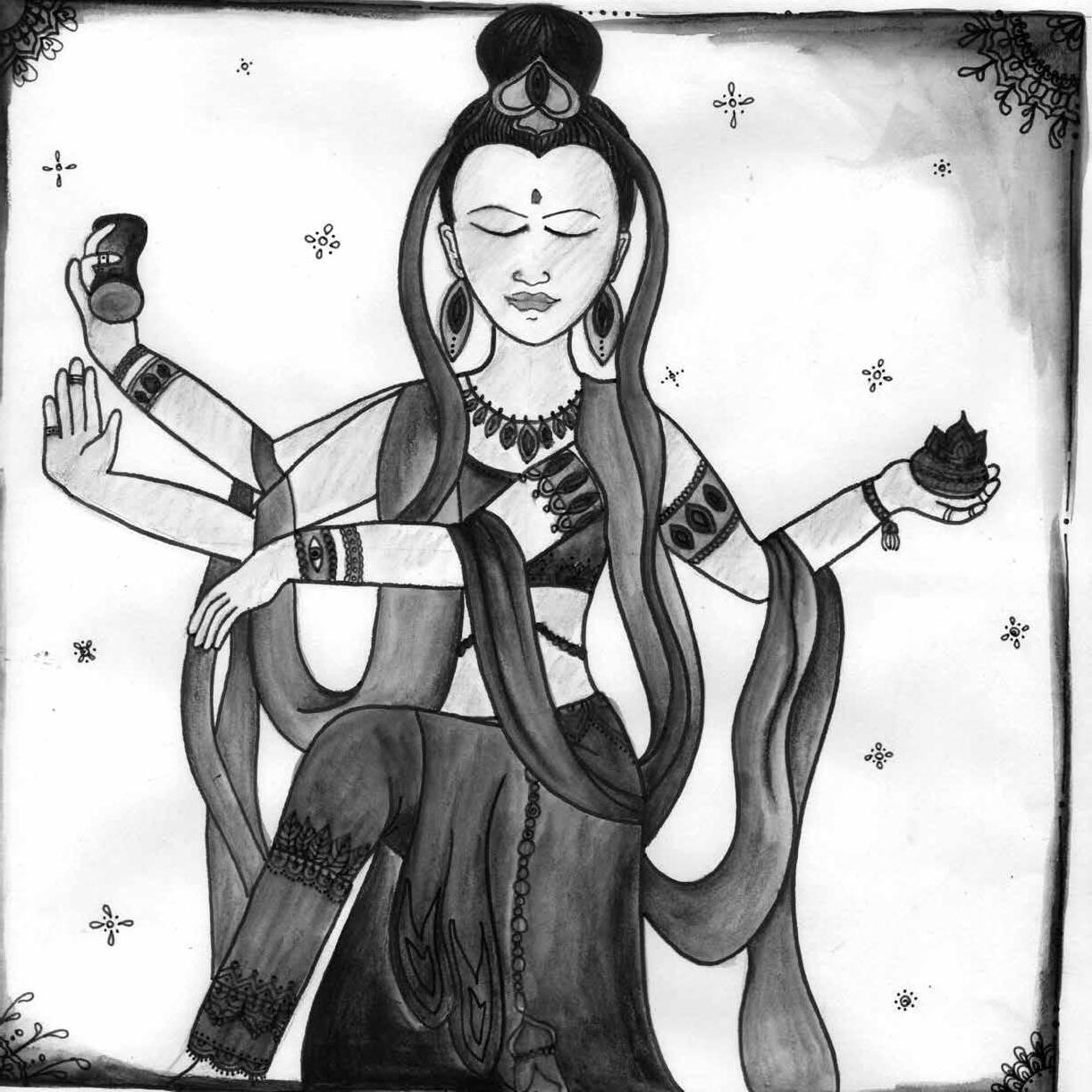
La Sexualité
— melissa
He called it “la sexualatie” — Personally belonging to no one individually. Said it was not a personality disorder like Quick 999, what should I do with my Delinquent daughter?
I think she kissed someone Who has a vagina!
Not a condition you should have interventions to explain...
Err no mum no, I'm not taking herion ... But oh yeah and don’t go mad I’m A fully blown lesbian...
Ps. can you let dad know.
The last time I cracked at his Downton abbey commentary
And screamed
If they were “homo” I was Obligatory “homo” too,
he said yes my dear child
we are all homo-sapien... what on earth are they teaching you Children today?
But now when she asks what Exactly this means
You know she's referring to your (Not-so-clear-cut)
sexual activities.
You can see the sweat on her moustache As she contemplates if they will Ever be grandparents. .... Your red in the face starts to spill on the pavements.
You wonder why it feels like your fighting some political movement. But he said to me no, don't you dare worry little bumblebee .. This is all just a part of la sexualatie, Never let their skeletal flaws make you take it so personally.
mozaik 36 I Mind Section I 59
Hermaphrodite:
— melissa
I wake to find muses are dead, And my name is that of the hermaphrodite — A metaphor now for both Genital mutilation
And a throbbing penis. Because where one hand Covers
My breasts, The other pushes His hand
Under my skirt, Like a paint with too much water
Where the colours have been Forced to blur.
Because bigots breed in between The spaces of your Knicker draw, and the dust of Greek mythology....
Typography will not pluck
The perceptions of our Immorality,
It will only mask what you
Perceive as dirty.
Therefore treason is not A woman who kisses the lips of Another woman, An infertile womb or a man who Stuffs his bra with red lipstick. It is not the art of Being promiscuous, the people who Claim to be feminist, or the sexual act
Between two men. Our sheets have been made From second-hand newspaper foldings, Daily Mail discrimination etched onto their skin
In the shape of a foetus
Like facts, rather than opinions. But now all muses are dead, And we must wear the labels of hermaphrodites
With pride.
mozaik 36 I Sexuality and Taboos I 60
Melissa recently relocated to Canada and is currently working on a collection of short stories. Her love of poetry started at a young age and she has been writing ever since.

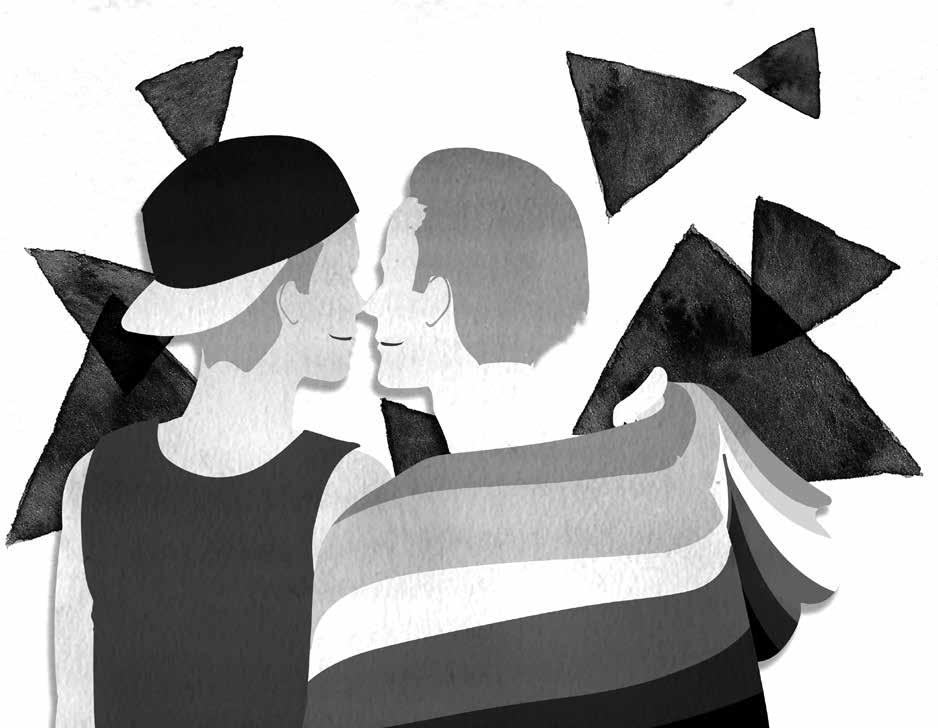
mozaik 36 I Mind Section I 61
— melissa
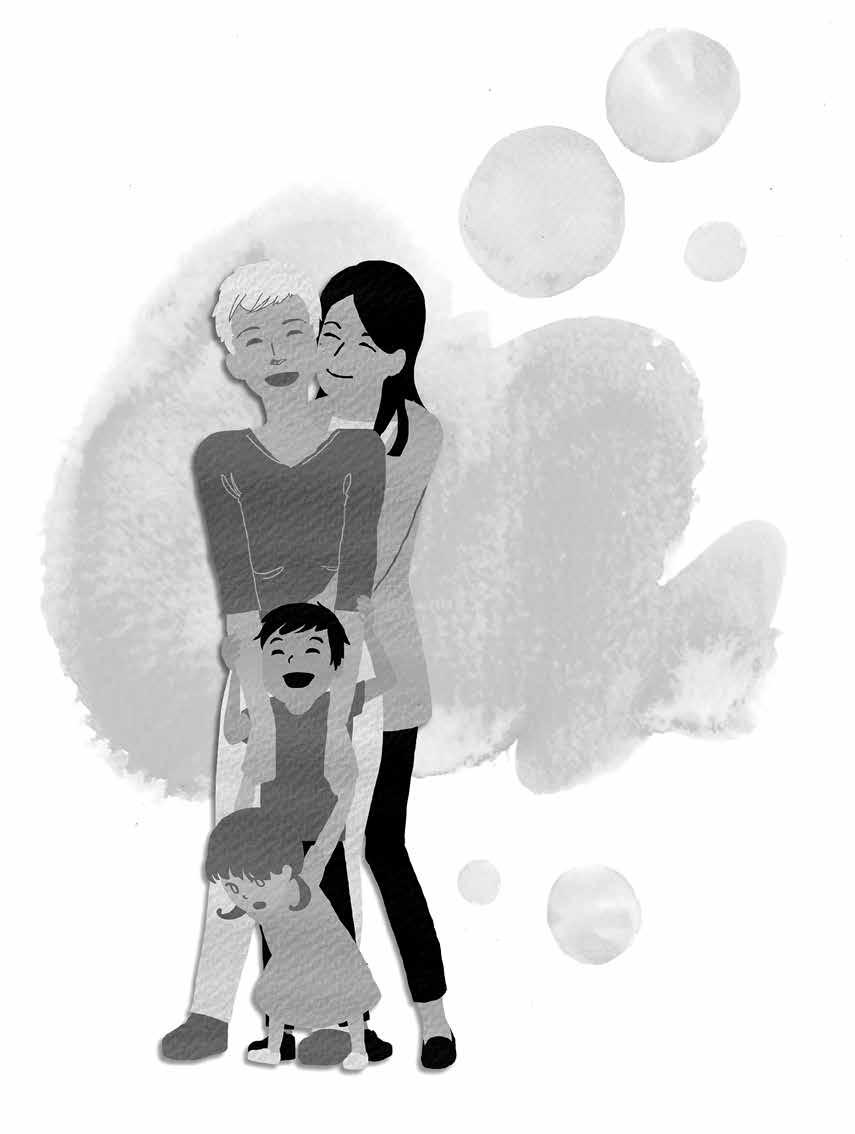
wscf-europe.org








 Mozaik Editor-in-Chief
— james jackson
Mozaik Editor-in-Chief
— james jackson




















